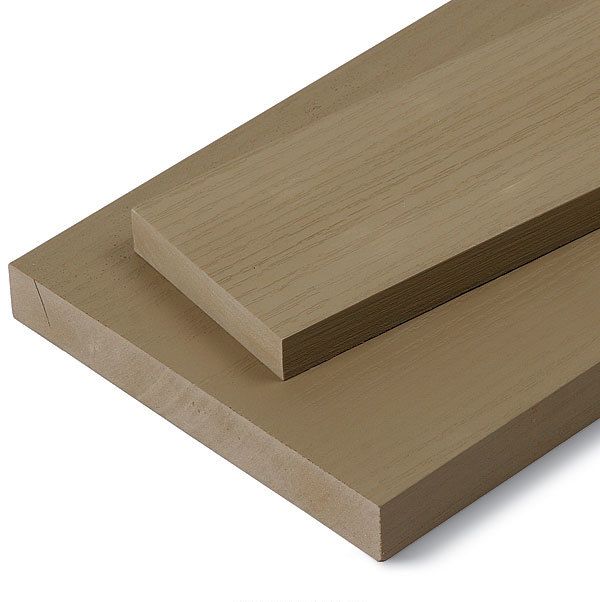Boral TruExterior Trim
This engineered-trim option is a blend of bio-based polymers and coal-combustion byproducts.

On a recent framing project, I was asked to install a trim product that I had never seen or worked with before: Boral TruExterior Trim. This trim is a blend of bio-based polymers and coal-combustion byproducts. I think it was designed to fill what many of us see as a glaring hole in the offerings for exterior trim: the lack of a reasonably priced, durable, dimensionally stable, low-maintenance product that looks and tools like wood. If we could have all of that without destroying our environment in the process, even better. From an installer’s viewpoint, I have to say that, while not perfect, TruExterior Trim comes pretty close to satisfying that list of demands.
When my first delivery arrived, my initial impression was that it resembles MDF, has a weight somewhere between that of wood and PVC trim, and has both woodgrain and smooth faces.
On many jobs, the biggest problem is storing the primed finger-jointed pine trim that we typically use. If it gets wet (or is even exposed to moisture), I’m left with a pile of cupped boards that need a lot of extra attention if we want to walk away from the job with our heads held high. This is where TruExterior Trim scored its first points with me.
Because we had to special-order it for this job, we had the entire project’s worth of trim delivered at the very beginning, and some sat in the yard, untarped, for two months. Despite exposure to midsummer thunderstorms and rainy days, the trim boards we installed on our last day were identical to the ones we had installed at the beginning of the job: no cupping, no warping, no twisting, no bloating.
TruExterior Trim can be cut with standard carbide-tipped sawblades, but it’s a good idea to dedicate one blade to the material. After just one rip, the tablesaw blade was useless for cutting anything other than the TruExterior Trim. Also, similar to fiber-cement trim, cutting this material creates dust that is extremely fine and abrasive. Make sure to blow off all your tools with compressed air at the end of each day to prevent damage to moving parts.
We fastened the stock with coil siding nails and used standard wood glue on joints and 15-ga. trim nails on miters, all with great success. We had runs of trim that were up to 40 ft. in length but didn’t experience any expansion and contraction at the scarf joints between boards.
One complaint I have about TruExterior Trim is that compared to wood, it can be difficult to handle. It is heavy and fragile like fiber cement, but floppy like PVC. When working on the second floor, we often like to lean boards against the house and pull them in through windows as needed. TruExterior Trim is simply too flexible to do this.
Bottom line: Boral TruExterior Trim is more dimensionally stable than PVC or wood, looks better than fiber cement, and is installed with the same tools and techniques one would use with wood. It has its weaknesses, but in the end, it’s a big step in the right direction toward good-looking, long-lasting exterior trim.






Comments are closed.